Amethyst Sunbird
Posted: Sun Mar 23, 2014 1:33 pm
792. Amethyst Sunbird (formerly known as Black Sunbird) Chalcomitra amethystina (Swartsuikerbekkie)
Order: Passeriformes. Family: Nectariniidae
Description
Size 15 cm.
Adult male: At a distance male appears all black, but at close range, the forecrown is metallic green and the throat, carpal patch and rump are iridescent purple. Otherwise the plumage is jet black (fresh plumage) to brownish black. This species has no eclipse plumage.
Adult female: Upperparts brown, eyebrow pale off-white, and underparts creamy, streaked brown, dusky throat. The illustration in Sasol is a female of the race C. a. kirkii which does not occur in SA, but only in Namibia, Botswana, Zimbabwe etc. The dark throat-patch is absent in the female of this race.
Immature: Similar to the adult female, but with an orange to brown gape; the immature male has a purple throat.
Similar species: The male lacks the scarlet breast of the Scarlet-chested Sunbird. Female could be confused with female Scarlet-chested Sunbird but has paler streaked underparts. Females Scarlet-chested Sunbird are browner and have mottled brown, not streaked, underparts and broad, buffy malar stripes.
Distribution
Mainly occurs in Africa south of the equator, from Kenya and Tanzania through southern DRC and Zambia to southern Africa. Here it is fairly common across Zimbabwe, northern and south-eastern Mozambique and South Africa from Limpopo Province and Gauteng to KwaZulu-Natal, extending down the coast to Cape Agulhas. It is also has scattered populations in northern Namibia (including the Caprivi Strip) and northern as well as south-eastern Botswana.
C. a. kirkii: South Sudan, Uganda, w, c Kenya, and s Tanzania to e Zambia, Zimbabwe and c Mozambique
C. a. deminuta: se Gabon and s Congo to sw DR Congo, Angola, c, w Zambia, n Botswana and n Namibia
C. a. amethystina: se Botswana, s Mozambique and South Africa
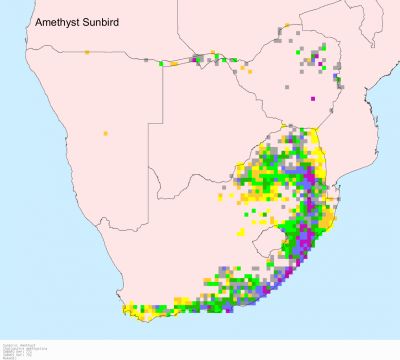
Habitat
Forest edge, woodland, savanna and suburban gardens.
Diet
It eats nectar supplemented with insects, foraging wherever nectar is available. It often hawks flying insects from the trees or bushes, also gleaning them from leaves and branches. Nectar is obtained either from flowers or from garden feeders, which it uses readily.
Breeding
The nest is built solely by the female, consisting of an oval-shaped structure built of lichen, grass, stalks and bark cemented with spider web. The 3.5-5.5 cm entrance is placed on the side, and the inside is lined with soft plant down and feathers. It is attached strongly to a drooping branch of a tree, bush or creeper usually 2-6 m above ground. Egg-laying season is year round, peaking from September-November in Zimbabwe and October-February in South Africa. It lays 1-3 eggs, which are incubated solely by the female for 13-18 days. The chicks are fed mainly by the female, leaving the nest after about 14-18 days, becoming independent after at least 1 week.
Parasitised by Klaas's Cuckoo, African Emerald Cuckoo and Green-backed Honeyguide.
Call
The call is a tschick note in flight, and an alarm call tit-tit-tit. The rather complex song of the Amethyst Sunbird comprises rapid twittering that ascends and descends.
http://www.xeno-canto.org/species/Chalc ... methystina
Status
Common resident. Not threatened, in fact its range has increased recently due to the spread of wooded gardens.
Order: Passeriformes. Family: Nectariniidae
Description
Size 15 cm.
Adult male: At a distance male appears all black, but at close range, the forecrown is metallic green and the throat, carpal patch and rump are iridescent purple. Otherwise the plumage is jet black (fresh plumage) to brownish black. This species has no eclipse plumage.
Adult female: Upperparts brown, eyebrow pale off-white, and underparts creamy, streaked brown, dusky throat. The illustration in Sasol is a female of the race C. a. kirkii which does not occur in SA, but only in Namibia, Botswana, Zimbabwe etc. The dark throat-patch is absent in the female of this race.
Immature: Similar to the adult female, but with an orange to brown gape; the immature male has a purple throat.
Similar species: The male lacks the scarlet breast of the Scarlet-chested Sunbird. Female could be confused with female Scarlet-chested Sunbird but has paler streaked underparts. Females Scarlet-chested Sunbird are browner and have mottled brown, not streaked, underparts and broad, buffy malar stripes.
Distribution
Mainly occurs in Africa south of the equator, from Kenya and Tanzania through southern DRC and Zambia to southern Africa. Here it is fairly common across Zimbabwe, northern and south-eastern Mozambique and South Africa from Limpopo Province and Gauteng to KwaZulu-Natal, extending down the coast to Cape Agulhas. It is also has scattered populations in northern Namibia (including the Caprivi Strip) and northern as well as south-eastern Botswana.
C. a. kirkii: South Sudan, Uganda, w, c Kenya, and s Tanzania to e Zambia, Zimbabwe and c Mozambique
C. a. deminuta: se Gabon and s Congo to sw DR Congo, Angola, c, w Zambia, n Botswana and n Namibia
C. a. amethystina: se Botswana, s Mozambique and South Africa

Habitat
Forest edge, woodland, savanna and suburban gardens.
Diet
It eats nectar supplemented with insects, foraging wherever nectar is available. It often hawks flying insects from the trees or bushes, also gleaning them from leaves and branches. Nectar is obtained either from flowers or from garden feeders, which it uses readily.
Breeding
The nest is built solely by the female, consisting of an oval-shaped structure built of lichen, grass, stalks and bark cemented with spider web. The 3.5-5.5 cm entrance is placed on the side, and the inside is lined with soft plant down and feathers. It is attached strongly to a drooping branch of a tree, bush or creeper usually 2-6 m above ground. Egg-laying season is year round, peaking from September-November in Zimbabwe and October-February in South Africa. It lays 1-3 eggs, which are incubated solely by the female for 13-18 days. The chicks are fed mainly by the female, leaving the nest after about 14-18 days, becoming independent after at least 1 week.
Parasitised by Klaas's Cuckoo, African Emerald Cuckoo and Green-backed Honeyguide.
Call
The call is a tschick note in flight, and an alarm call tit-tit-tit. The rather complex song of the Amethyst Sunbird comprises rapid twittering that ascends and descends.
http://www.xeno-canto.org/species/Chalc ... methystina
Status
Common resident. Not threatened, in fact its range has increased recently due to the spread of wooded gardens.
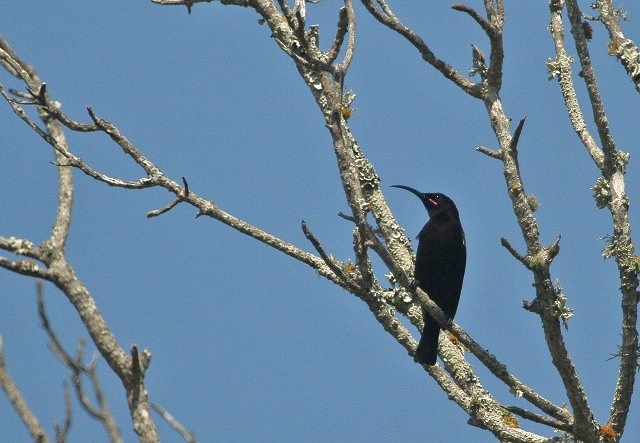
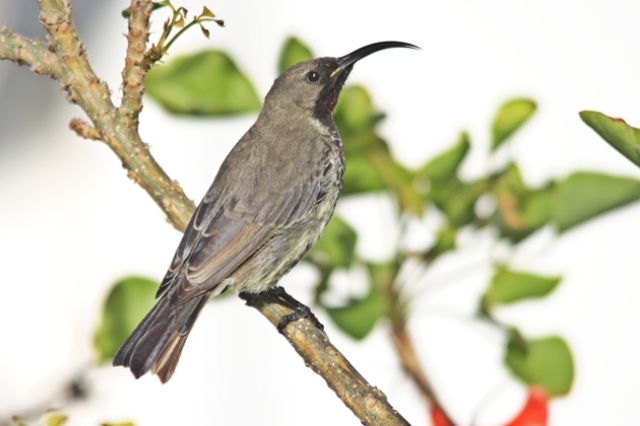 © Flutterby
© Flutterby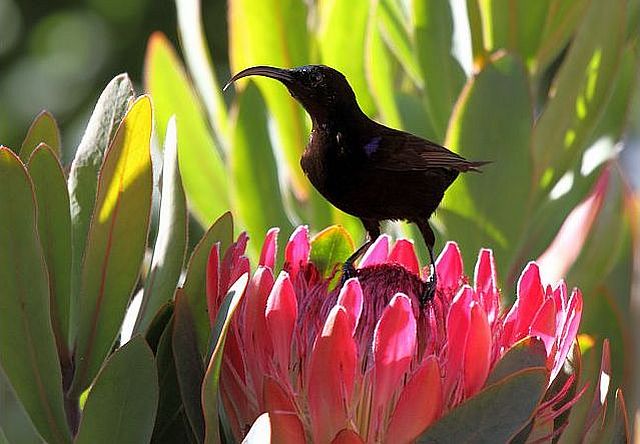 © Sharifa
© Sharifa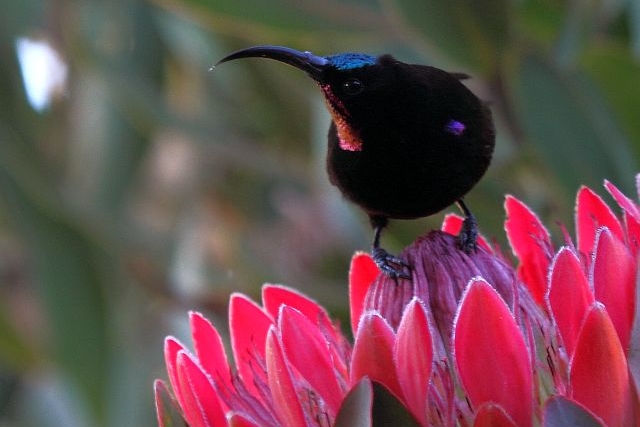 © Sharifa
© Sharifa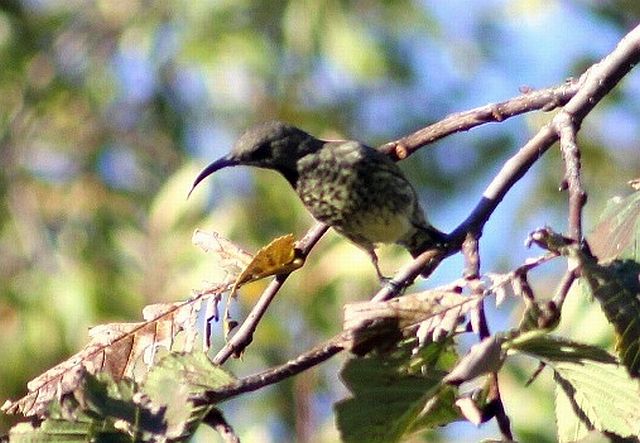 © Amoli
© Amoli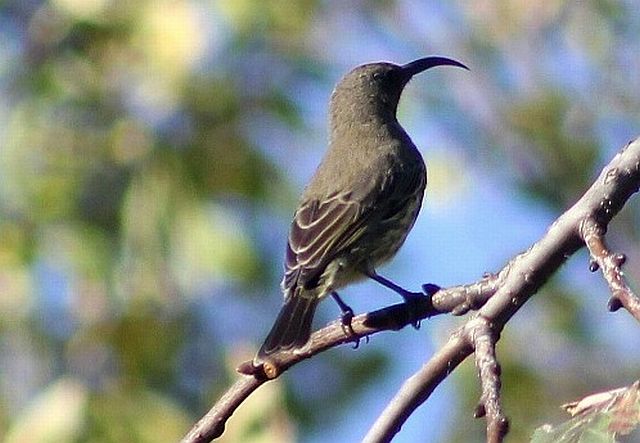 © Amoli
© Amoli 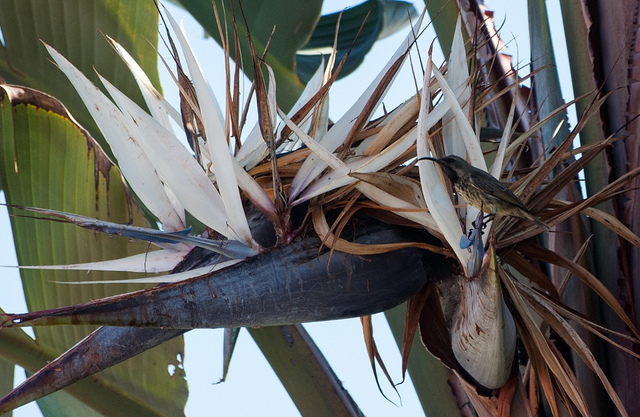 © steamtrainfan
© steamtrainfan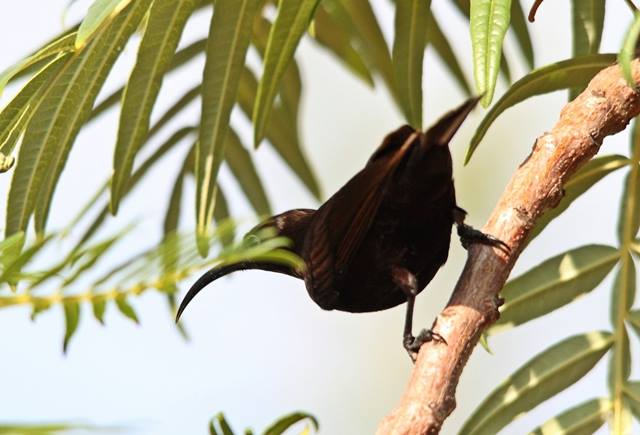 © Flutterby
© Flutterby © BluTuna
© BluTuna © Flutterby
© Flutterby © Flutterby
© Flutterby © Flutterby
© Flutterby © Heksie
© Heksie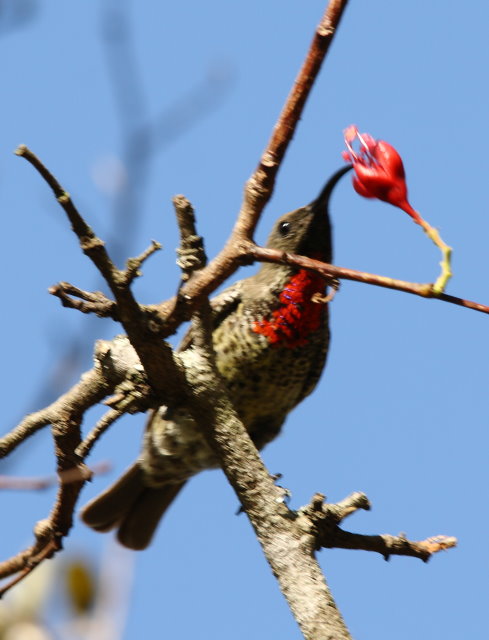 © Flutterby
© Flutterby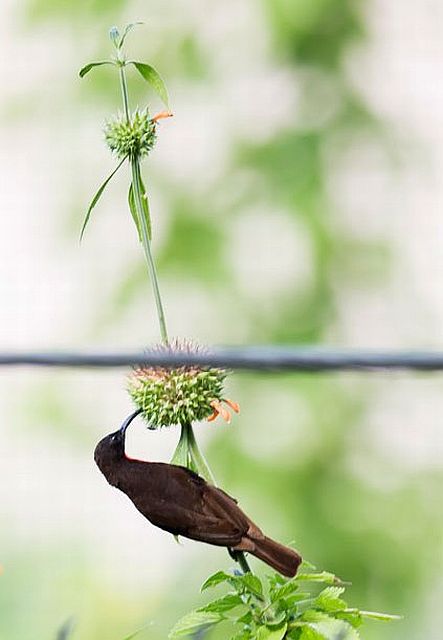 © Pumbaa
© Pumbaa  © Pumbaa
© Pumbaa 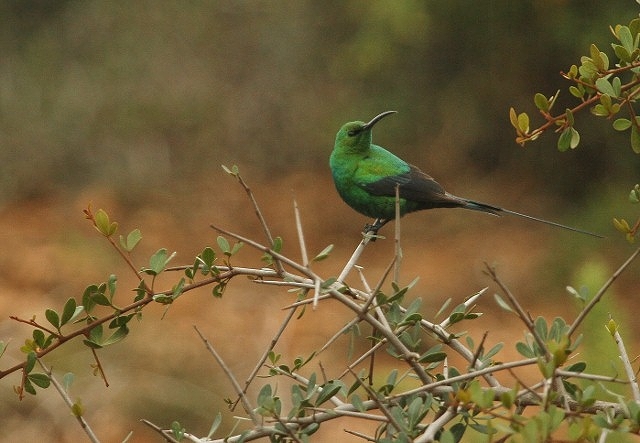 © nan
© nan © Sharifa
© Sharifa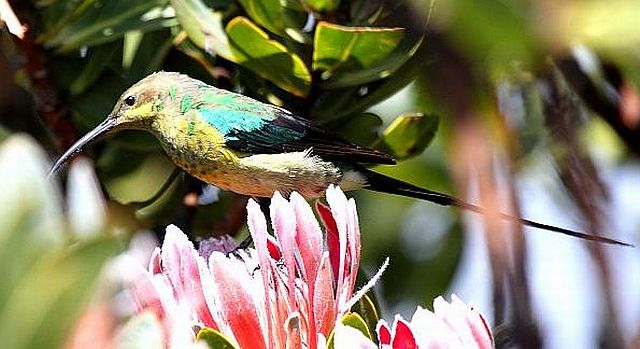 © Sharifa
© Sharifa © Michele Nel
© Michele Nel © nan
© nan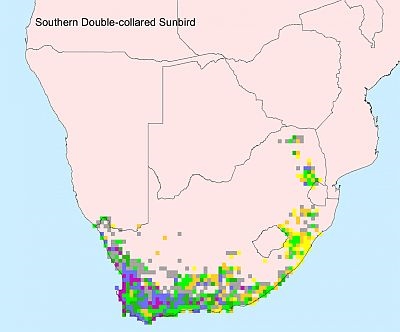
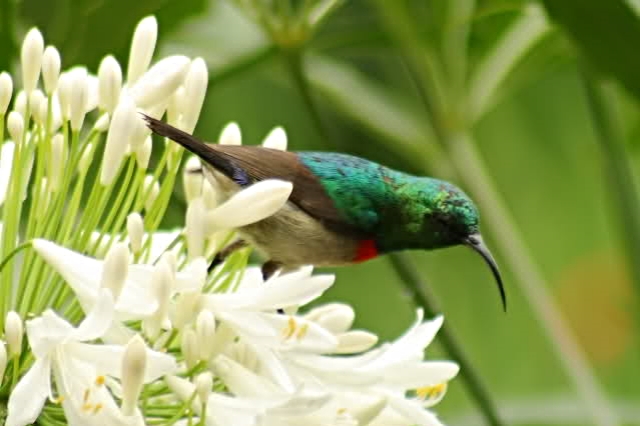
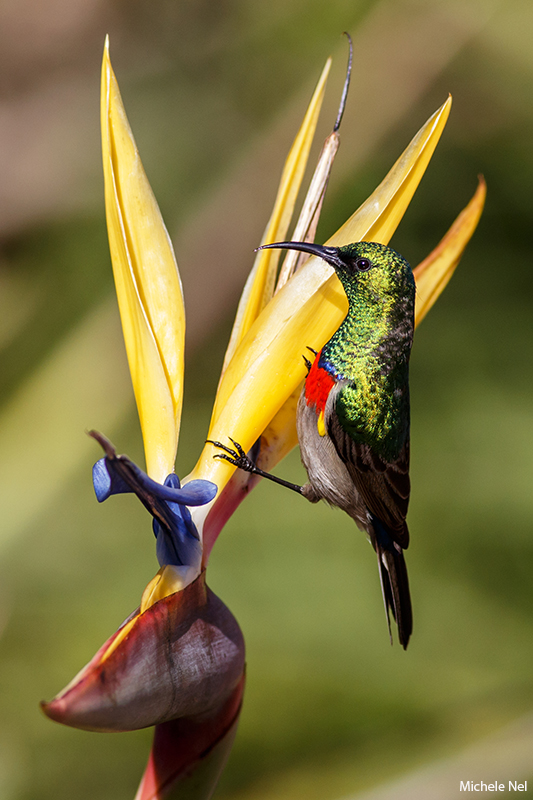 © Michele Nel
© Michele Nel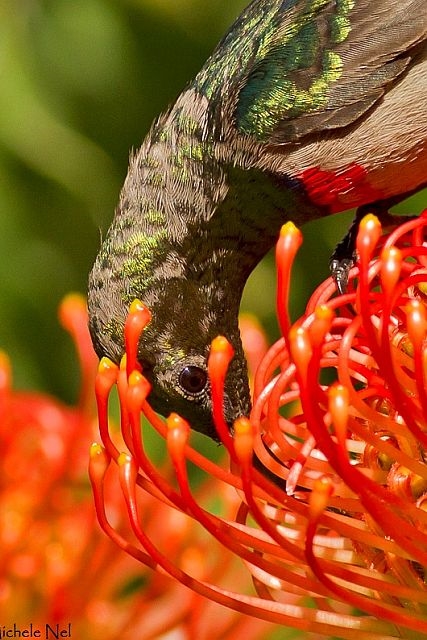 © Michele Nel
© Michele Nel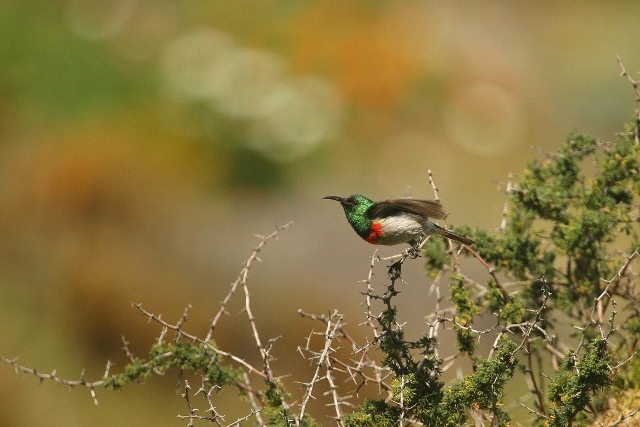 © nan
© nan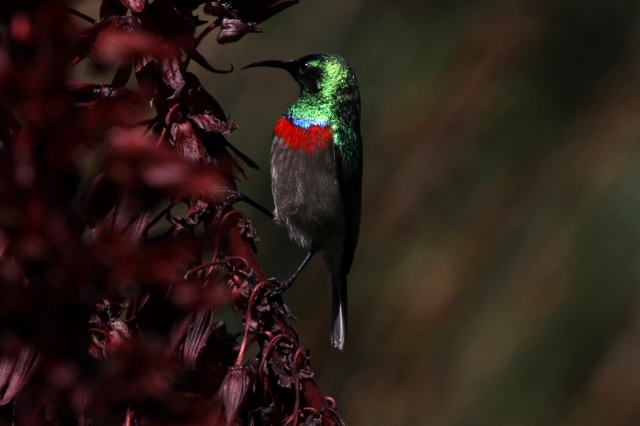 © Tina
© Tina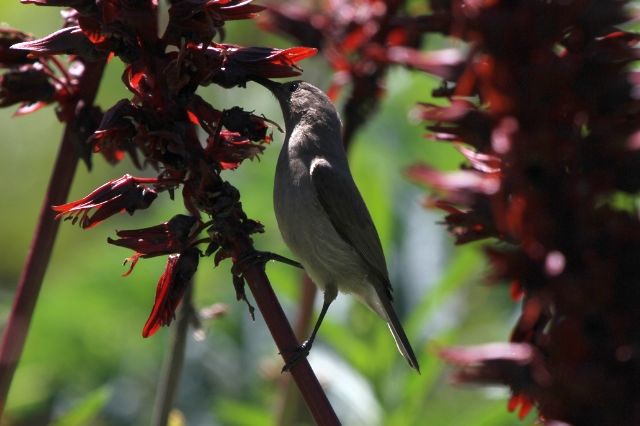 © Tina
© Tina © Michele Nel
© Michele Nel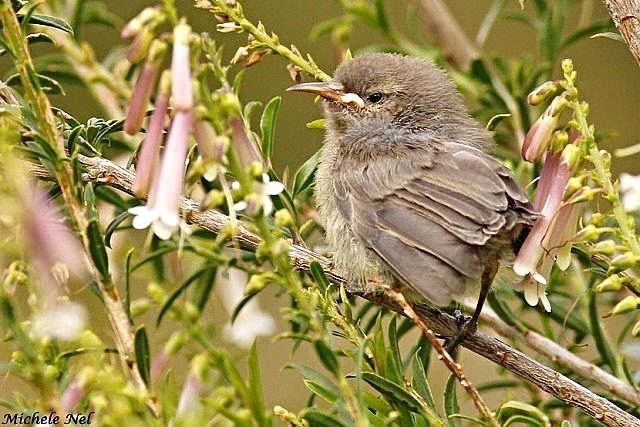 © Michele Nel
© Michele Nel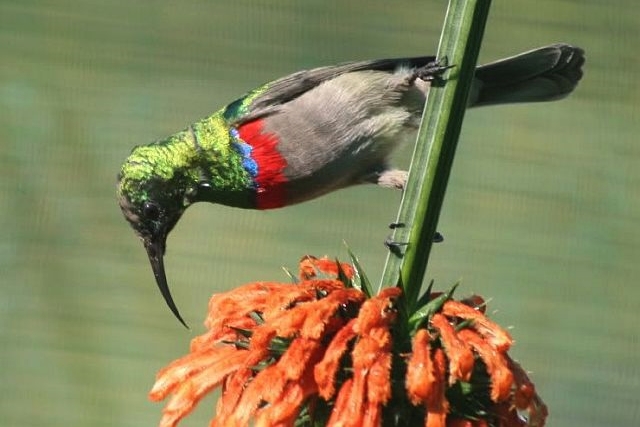 © okie
© okie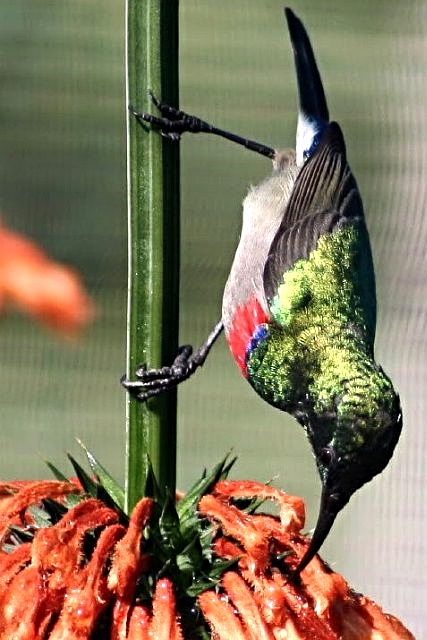 © okie
© okie
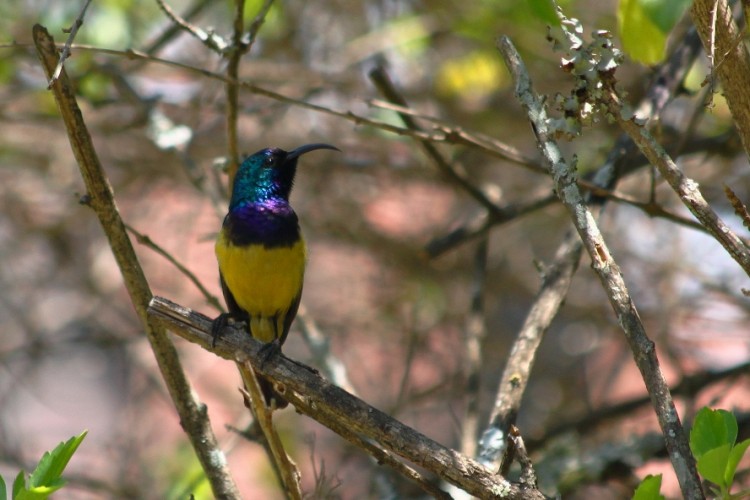 © Dindingwe
© Dindingwe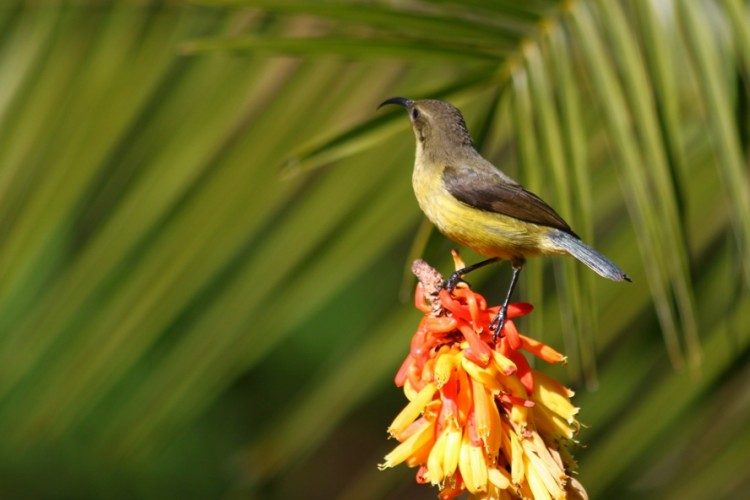 © Dindingwe
© Dindingwe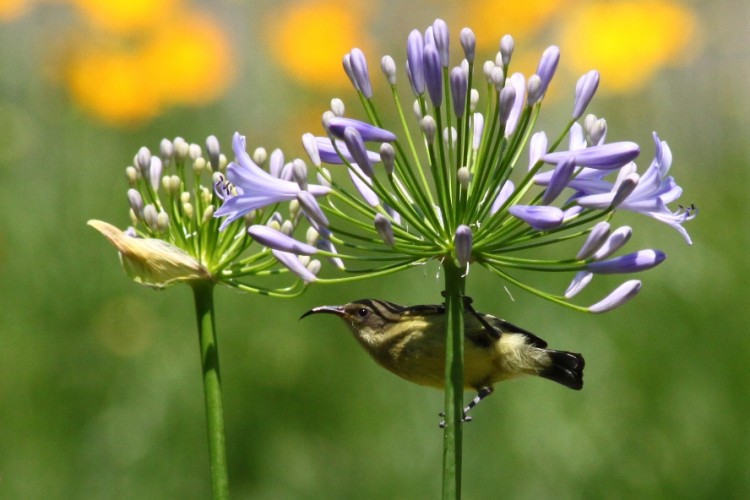 © Dindingwe
© Dindingwe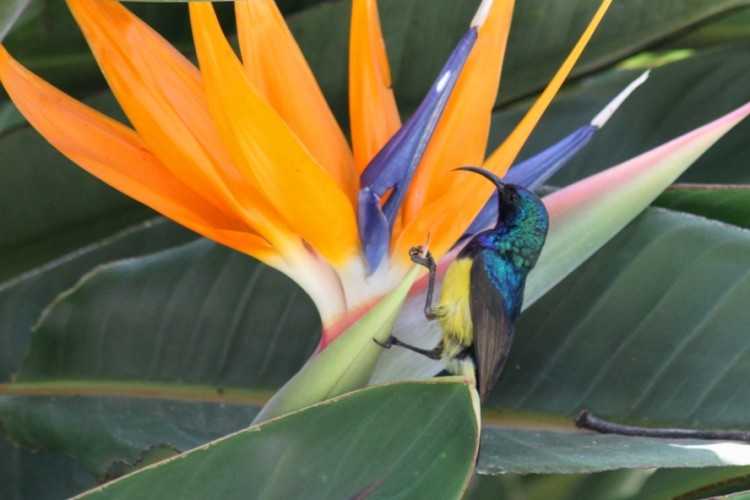 © Dindingwe
© Dindingwe